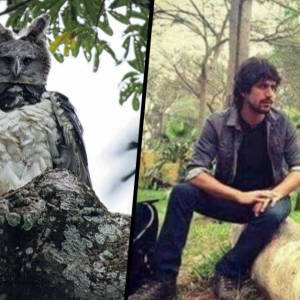The larval form giant bump-head sunfish had remained a mystery to ocean scientists – until now.

Scientists from Australia and New Zealand have finally uncovered the early life stage of one of the largest fish on the planet, the giant bump-head sunfish (Mola alexandrini). Interestingly, the larva of the giant bump-head sunfish is ridiculously tiny and resembles something between a cinnamon crunch and a snowflake. The discovery was announced by the Australian Museum, whose collections were integral to the research.
This species of bump-head sunfish is one of three Mola species that occupy Australian waters and is matched in weight only by its congener, the ocean sunfish, also known as the Mola mola. It can grow to more than 3 meters (9.8 feet) and weigh a whopping 2,000 kilograms (4,400 pounds). It spends its life moving between the ocean depths and the sea surface where it can be found basking on its side in order to gain heat from the Sun and be treated to some parasiticide grooming by gulls.
Female sunfish have the highest potential fecundity of any vertebrate, with adult specimens housing 300 million ova. Given their enormous ovulatory output, scientists have been perplexed as to why their eggs had never been found in the wild and why their larvae have hardly ever been spotted.
Sunfish expert Dr Marianne Nyegaard from the Auckland War Museum decided to search for the answers in preserved museum specimens rather than taking on the giant task of trying to encounter the bump-head’s larva out in the open ocean. Nyegaard worked with Australian Museum scientists, Kerryn Parkinson and Andrew King to sift through collections in search of a likely candidate. However, sunfish larva rarely resemble their adult version, making the identification of a specific species even harder.

A sunfish caught in 1910, with an estimated weight of 1600 kg (3500 lb). Photo: Peter Victor Reyes
The game-changing sample was finally collected off the New South Wales coast in 2017, but carrying out DNA analyses on the fragile, tiny specimen, which was just 5 millimeters in size, presented its own challenges. To minimize damage to the specimen, Kerryn Parkinson from the AM’s Ichthyology division painstakingly removed a single eyeball that Andrew King, a genomics specialist, used to extract and analyze the DNA.
“The DNA sequence from the existing AM specimen was compared to reference data generated by our international collaborators,” King said in a statement. “A clear match from the sequence was identified with samples from an adult Bump-head Sunfish (Mola alexandrini).”

An adult ocean sunfish compared to their size at birth. Source: Reddit
The scientists hope to use the new findings to identify further mola larvae sunfish collections held in museums and gain a fuller understanding of the life cycle of these marine giants. Their achievement highlights the importance of museum collections and the role they have to play in continuing research as emerging technologies open up new opportunities for analysis.





